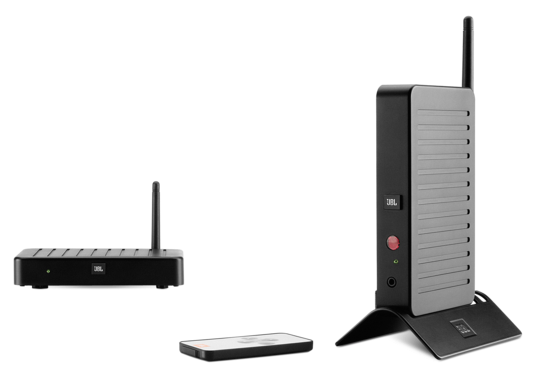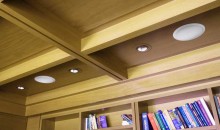Wireless Speakers for TV and Home Theater
It has been my position that as electronics grow smaller and smaller, and more and more of our homes become wireless and “connected”, it’s only a matter of time before we begin to see wireless speakers for TV becoming the norm. There are currently several models of wireless TV speakers on the market, but—to be perfectly honest—the technology has not yet passed the entry-level stage for most manufacturers dabbling in it.
If you’re hoping to configure wireless speakers for TV or home theater, you can do it—sort of—but it’s not going to match the level of audio quality that you can get from a wired system. Here are some issues to keep in mind while you’re pursuing this type of wireless system.
Bluetooth Isn’t Designed for True Multi-Channel Playback
Bluetooth is the defacto wireless audio standard for near-field speaker connectivity. AirPlay is also on the docket, but its proprietary nature and additional licensing fees makes it (unfortunately) a niche contender. The problem, of course, is that Bluetooth was never designed to transmit high quality audio in the first place. It was initially made as a close-range communication system for keyboards and mice. Commandeering the platform, manufacturers of headsets, speakers and headphones took the technology and found that they could make it work for transmitting audio. With advances like A2DP and AptX, Bluetooth is now picking up steam. It’s far easier to connect these days, and the audio quality is more or less on-par with a direct optical or coaxial digital connection. The only remaining issue is that Bluetooth simply isn’t designed, nor does it currently support, multi-channel audio transmission or playback. The last time this was even discussed (to our knowledge) was back in 2007 with a company called Open Interface—who claimed to be working on a multi-channel lossless codec for Bluetooth.
Apparently, it didn’t pan out. So, for now, multichannel wireless speakers for TV and home theater are going to need to use a different transmission medium.
[top-seller category_id=’29’ product_count=’4′ title=’Top Streaming Devices’]
Your WiFi Network is Already Pretty Clogged
WiFi is the next logical place, but the 802.11 spectrum is getting very clogged. Between wireless home computers, cell phones connecting to the Internet via WiFi, and desktop speakers pulling in streaming media from Spotify and other providers, the Wireless a/b/c/g/n spectrum is often a massive clutter to consider stealing yet more bandwidth for home theater speakers. Still, careful management of your home’s wireless network could allow for a healthy segment to be marked out for use in a wireless speaker system for your TV or home theater.
In fact, I think it has to since there isn’t much else available or capable.
As higher frequency options like 5 GHz+ systems come online, we find that they provide excellent bandwidth, but with one major drawback. Those signals bounce well, but don’t penetrate through barriers. When you get to those truly higher frequencies, you end up in a scenario where it’s likely you’re almost requiring line of sight access for all of your speakers. That can be overcome, but it’s a good indicator that there are truly valid reasons why wireless isn’t flooding the market in the world of television and home theater usage.
Wireless Speakers for TV and Home Theater Stalling
Getting 6 or more speakers to come together for home theater is where a company like WiSA comes in. They were supposed to bring wireless home theater speakers to the masses. Unfortunately, though they promised high quality playback, connectivity ease, and multichannel speaker capability, the reality is that current partners (which include Klipsch, Polk Audio, Aperion Audio, Anthem, Bang & Olufson, Monitor Audio, Onkyo, Paradigm, Pioneer, Def Tech and others) are more interested in desktop speakers than they are home theater. In fact, I don’t believe there is a current 5.1 wireless system on the market using WiSA technology for more than just a proof of concept. Aperion Audio came the closest with their Intimus 4T Summit system, but that pricey system lasted only a short time and then left the market…never to be replaced.
If the industry can overcome the challenges to creating wireless speakers for TV and home theater, then I think you’ll start to see more and more products hit the market. Until then, we’re going to take a wait-and-see approach to wireless speakers and keep recommending wired systems for now.
If You Absolutely HAVE to Have Wireless Speakers
But what if you absolutely HAVE to get wireless speakers for your TV right now? It turns out, there are some solutions. You can pick up a JBL WEM-1 Wireless Expansion Module to power a small pair of surrounds in the back of your room or even get wireless speakers for TV set up in your listening room. This is a small $329 device that includes a stereo transmitter to connect to your audio source (be it your Television or your AV receiver) as well as a small stereo amplifier that receives the wireless transmission and lets you connect a pair of up to 50 Watt (per channel) speakers. It’s a great interim solution, but it’s not made for more than two speakers at a time. There are a couple of other products like this as well (Aperion Audio’s Allaire Zona Home Audio Link comes to mind). Some of these systems will require that you used powered speakers, or have an external amplifier to take the wireless signal—so pay attention to details before you buy!
Most other speaker-level solutions are based on receiving a Bluetooth signal and won’t work unless you have a TV that transmits Bluetooth audio (I’ve never heard of one that does). These are more designed for receiving input from a portable music player or smart phone.
Conclusion
We’re not yet at the point where we can easily connect wireless speakers for TV or home theater. It’s not quite as bad as “you can’t get there from here”—but it’s close. Still, there are some workarounds. Certainly no one is stepping up in a big way and marketing a full 5.1 audio solution. That’s something that just might change everything—hopefully for the better. I think that wireless speakers would make all of our lives easier and help home theater become more prolific in the life of the consumer. We just need to make sure the technology is bulletproof and the audio quality is top-notch before we get too excited. That just may involve something that has yet to be invented.








Can’t you add a bluetooth transmitter to your TV?
Not easily, but you can transmit just about anything in stereo.